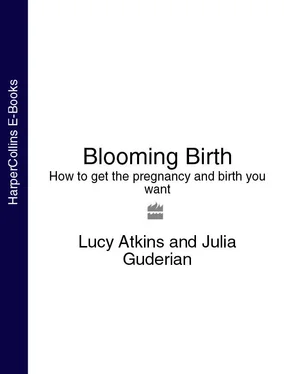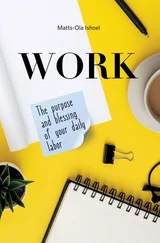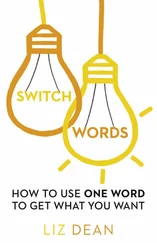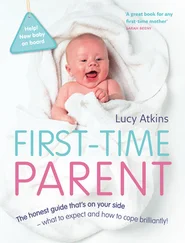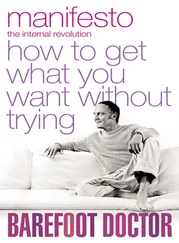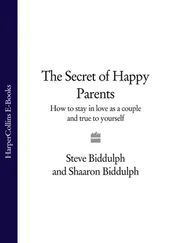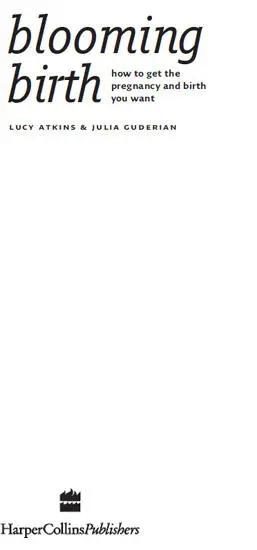
Cover
Title Page
Introduction
CHAPTER ONE Pregnancy for busy women
CHAPTER TWO Birthing for beginners
CHAPTER THREE Fear and pain
CHAPTER FOUR Second time around
CHAPTER FIVE Your options
CHAPTER SIX Surgical birth
CHAPTER SEVEN Expect the unexpected…
CHAPTER EIGHT Blokes, birth and babies
CHAPTER NINE The love of a good woman
CHAPTER TEN Frozen peas and pyjamas
Notes
Acknowledgements
Keep Reading
About the Authors
Copyright
About the Publisher
When I was pregnant for the first time, I was your typical swotty mother-to-be. What to Expect When You’re Expecting was my bible. I diligently attended childbirth classes, toured my local hospital and performed regular antenatal yoga exercises. I was supposed to push the baby out with my breath but ended up with every intervention known to modern obstetrics (at least that’s how it felt). I was healthy, educated and – supposedly – informed but still the reality of childbirth floored me. And I’m not alone. One 2005 survey of 3,000 first-time mothers found that for the majority of women giving birth in the UK today, childbirth is a scary ordeal that leaves us in a state of shock. Eight out of ten of us say we were frightened at some point during labour, and that giving birth was more painful than we had ever imagined. One-third of us, meanwhile, say ante-natal classes didn’t prepare us for the reality of childbirth. 1Our preparations, it would seem, are not exactly hitting the mark.
When I got pregnant for the second time, I was really scared about the birth. I had just moved to the States where doulas – women who are trained to give you emotional and practical support during pregnancy and childbirth – are widely available and people kept telling me I should hire one. Figuring I had nothing to lose I started to interview doulas. There was something about Julia that stood out – a combination of practicality, pragmatism, realism and genuine empathy. She also has impressive credentials. Julia is a mother of two, a doula and childbirth teacher, trained and certified by the world’s largest doula organisation (DONA International) to give women emotional and practical – but not medical – support before, during and after childbirth. She has 14 years’ experience of helping women through pregnancy and birth and is a certified counsellor and hypnotherapist. She has also worked with all kinds of mothers: she founded and ran the The New Hope Doula Project in Seattle, connecting volunteer doulas with women giving their babies for adoption. She also founded a non-profit support group for women who have had caesareans (and are upset by them) and she designed and set up a popular network of mother’s groups – helping women connect with one another for support, companionship and ideas across the States. Julia was, to put it mildly, a lucky find.
She worked closely with me for the rest of my pregnancy and showed me that truly preparing for childbirth is about admitting what scares you, making good choices, staying open minded and learning brilliant ways to cope with whatever labour throws at you on the day. It’s about understanding, and accepting the areas over which you have no control – without becoming a fatalistic loon about the whole thing. When I went into labour for the second time, I was prepared to handle whatever happened (including my worst case scenario). My son’s birth was an amazing, positive experience. As a journalist used to disseminating information, it amazed me that I’d come across no book or resource that could compare with the work Julia did to help me prepare for childbirth. It was clear to me that her methodology and experience could – and should – be made available to any woman who simply wanted to have a better birth. Julia’s work with me – and with countless other mothers and mothers-to-be over the years – forms the backbone of this book. It will be relevant to you whether this is your first baby, or you have a whole brood already. Blooming Birth is for any woman who simply wants to give birth without feeling shocked, terrified, upset or horrified by the experience.
Though doulas are becoming more and more popular in Britain, they are still a relatively new phenomenon here. Not all of us can afford, or find, one where we live. This book will give you some useful doula tricks for coping during childbirth. It will also show you what your partner – and anyone else who’ll be supporting you during this birth – can learn from doulas.
The actual writing of this book was my department. As a health writer for newspapers like The Guardian , I’m used to grappling with ideas, interviewing experts and translating their arcane medical jargon into something that normal people can actually understand. Since I specialise in writing about pregnancy, birth and babies I’m also used to finding the best expert, support group or information source for these particular issues. This is where my professional skills come in but, above all, I’m writing this book as a mother. I have three children (my third baby, Ted, was born somewhere around Chapter 5 so I’m certainly up to date on birth in Britain). I am, then, your average ‘punter’. I’m not a childbirth expert, a childbirth nut or medically trained in any way: I’m a mother like you, who simply wanted and got a better experience of childbirth. I used the ideas in this book to prepare for, and cope with, Ted’s birth: they worked brilliantly (again).
This is not a medical book, but we have worked closely with doctors, midwives and other experts to give you the basic facts. You should see Blooming Birth as a springboard when it comes to medical matters – we show you what preparation means and the details are up to you. To help you do this, we’ve given you book lists and online resources so you can find the more detailed or specialist information you need.
We have unashamedly set out to give you the nitty gritty of birth here, not some neat, textbook version. We don’t talk about ‘discomfort’, we talk about pain because if you’re to cope with it you need to know about it. Between us Julia and I have certainly run the gauntlet of birthing experiences – from prolonged labour, failure to progress, epidurals, forceps delivery, a broken tail-bone, a 4th-degree tear, an infected scar and an emergency caesarean to drug-free labour, vaginal birth after caesarean, homebirth in a tub and homebirth on dry land. We’ve also interviewed over a hundred women from brand-new mothers to grandmothers about pregnancy and birth: you’ll learn what worked, and didn’t work, for them and you’ll learn the tips, strategies and awakenings that come from simply getting babies out.
Or witnessing this – Blooming Birth is for blokes too. Virtually every man we spoke to for this book said he, too, felt utterly unprepared for the reality of his baby’s entry into the world. If properly prepared, your baby’s dad can have a hugely positive influence on how you experience this birth. So, even if he’s not an avid reader of birth books, at the very least get your partner to read Chapter 8: Blokes, Birth and Babies.
By the time you finish reading this you may not actually be looking forward to giving birth but you’ll certainly feel more confident about it. You’ll know you can’t control everything that happens, but you’ll understand more about what might. You’ll understand the maternity system and how to negotiate it so it serves you best. You’ll know how to get the support you need, before, during and after the arrival of your baby. And you’ll know where to go, what to read and who to talk to if you need more help or information.
Читать дальше
